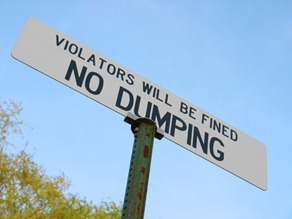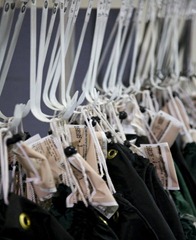Drycleaning At Your Own Risk?
 A year ago, Stephen Swift, a local Honolulu businessman ostensibly engaged in hazardous waste disposal, found himself jailed for two years for failing to dispose of quantities of perchloroethylene, commonly called Perc,. Instead of taking it to the local hazardous waste disposal site where it would have been safely disposed of for a fee, he stashed it on some unused property, where it managed to foul some air and some earth before it was discovered.
A year ago, Stephen Swift, a local Honolulu businessman ostensibly engaged in hazardous waste disposal, found himself jailed for two years for failing to dispose of quantities of perchloroethylene, commonly called Perc,. Instead of taking it to the local hazardous waste disposal site where it would have been safely disposed of for a fee, he stashed it on some unused property, where it managed to foul some air and some earth before it was discovered.
Recently, Alexla Danzer, a high school student, collaborated with researchers at Georgetown University’s chemistry department to find whether, and to what degree, Perc, or its sister chemical, tetrachloroethylene (TCE), persisted in drycleaned clothes. The researchers found in did, particularly in wool, and that more and more of it persisted with each drycleaning.
A search of the internet reveals numerous instances where TCE, the main component of the most common and widely used dry cleaning fluid, is dumped. It is dumped in local waters, buried in local landfills and hidden in local woods – primarily to avoid the fees that dumping hazardous materials incurs. From there is either (or both) released into the atmosphere or leaked into the surrounding earth until it percolates into the water table — often contaminating local drinking water. Because of its mobility in groundwater, its toxicity at low levels, and its density (which causes it to sink below the water table, clean-up activities are more difficult than for oil spills.
 However, as there had been no studies of the persistence of Perc in drycleaned clothes until Alexla’s, there are no studies of its effects on all of us who wear those clothes. There is, however, a fair amount of data on breathing and ingesting these chemicals, which are, according to Senator Elizabeth Dole, the "most widespread industrial water contaminant in America."
However, as there had been no studies of the persistence of Perc in drycleaned clothes until Alexla’s, there are no studies of its effects on all of us who wear those clothes. There is, however, a fair amount of data on breathing and ingesting these chemicals, which are, according to Senator Elizabeth Dole, the "most widespread industrial water contaminant in America."
Industrially, perchloroethylene, or PERC, as it is commonly called, is a versatile volatile organic compound (VOC) that is very stable, non-flammable and is an excellent solvent for organic materials – like a lot of the stains on clothes we bring to the dry cleaner. It is also used to degrease metal parts in the automotive and other metal parts industries. Because it has such basic uses, 760 million pounds are used every year in the U.S. If even a small fraction is dumped illegally, that’s a awful lot of Perc and TCE in our air and our water, out of our control.
There’s a lot of hysteria out there that all the chemicals we use in almost every manufactured product are toxic in one way or another. After reading the multitude of blogs on the subject, the reader is ready to retreat to a remote cabin and start living off the land. On the technical side, however, there are innumerable papers and studies, that all seem to point to the fact that an alarming number of these chemicals really are toxic and very bad for humans and other species. The case is particularly strong for the fluids used in drycleaning.
But what are the alternatives? It may be true that most clothes don’t really need drycleaning, but can be washed. And we may be off the hook for silks and silk-like materials, that retain almost no trace of the compounds they are cleaned in. But that is not true of wool and similar fabrics. Who will wash them with the care they need to be washed with, and return them to us, pressed and ready to wear for a fee we’re prepared to pay?
Most of the environmentally destructive things we do, like supporting toxic drycleaning, are ingrained in our everyday life. Developing alternatives for each of us personally as well as collectively needs to be an ongoing conversation and an integral part of our politics.


